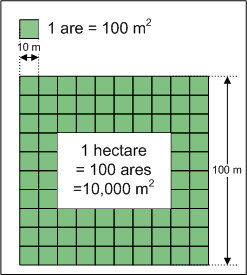Table of Contents |
As per United Nations estimates, in November 2022, the world human population reached 8 billion people. That’s an increase of a billion people in only 11 years! China and India have been the two most populous countries in the world for hundreds of years, and in 2022, India overtook China to become the most populous country, with a population of 1.4 billion.
While the total human population continues to rise, the increase is not distributed equally around the world. Many poorer countries in sub-Saharan Africa are expected to have the fastest population growth in the next decades. Meanwhile, highly developed countries, such as Italy, are decreasing in population as the current population ages and dies and the number new births is reducing.
Projecting further out to the end of the 21st century, the UN estimates that in 2100, the total world population will be between 10 and 11 billion people.
Continued human population growth has impacts on all areas of sustainability. As the human population increases, there is also increased overexploitation of natural resources such as water, land, and fossil fuels. There is also more habitat disruption and carbon emissions that accelerate global warming. Human population growth can also lead to social issues like overcrowding and strain on public services and economic issues like increased public debt and poverty.
The current world population is considered unsustainable by many scientists. Humans are a major cause of environmental degradation as we dig for fossil fuels and deforest areas for meat production.
Unfortunately, in countries where people are the poorest, populations tend to be the highest. This combination often results in people having no alternative but to degrade their local ecosystems in order to provide for themselves. The rate at which we consume resources and cause environmental degradation is proportionate to the rate of increase in our population.

|

|

|

|
Referring again to the world population graph below, the UN projects three possible futures of population growth by 2100: based on low (green line), medium (orange line), and high (red line) birth rate projections. The impacts on our environment and human quality of life will vary dramatically, depending on which of the scenarios becomes reality.

When talking about human population growth and its relationship to the environment, it is important to understand our key concept for today, the ecological footprint. Ecological footprint is the amount of resources required to sustain an individual or a population.
It is usually measured in hectares, which is a unit of measurement of land area and is equal to 10,000 square meters. It is the metric system equivalent to acres.

IN CONTEXT
In the United States, the average standard of living creates an ecological footprint that requires 5 hectares of land area per person. This is about the area of nine football fields.

According to the World Bank, the United States currently has 0.5 arable hectares of land available per person. This means there is less land available in the country than we require with our average standard of living. This is made possible because much of the land which supports the U.S. standard of living is borrowed from other countries by importing much of our food in commodities.
In other developing countries, such as India, the average standard of living requires only 0.5 hectares of land, which is less than 1 football field.

If the entire world population required the same standard of living as the United States, we would need three Earths to support it.

There are many types of environmental impacts of human population growth.
| Environmental Impacts | Description |
|---|---|
| Atmospheric pollution | Pollution from cars and industrial processes have caused significant atmospheric pollution all over the world. |
| Climate change | Carbon dioxide production has altered the planet's heating and cooling systems, creating a phenomenon called climate change. |
| Water pollution | Safe drinking water resources have been polluted, preventing millions of people all over the planet from having any safe drinking water. |
| Threatened biodiversity | Sprawl of cities and farming has destroyed habitat and food resources, threatening the biodiversity of our ecosystems and causing millions of species to go extinct in just the last couple of centuries. |
| Overexploitation | Too much hunting and fishing has also endangered species. |
| Deforestation | Meat production and agriculture have caused huge swatches of forest to disappear, which only increases the impacts of climate change and air pollution. |
| Resource depletion | The resources needed to support and maintain the lifestyles of developed nations are resulting in the depletion of nonrenewable resources, such as fossil fuels and various rare materials. |
Source: THIS TUTORIAL WAS AUTHORED BY JENSEN MORGAN FOR SOPHIA LEARNING. PLEASE SEE OUR TERMS OF USE.